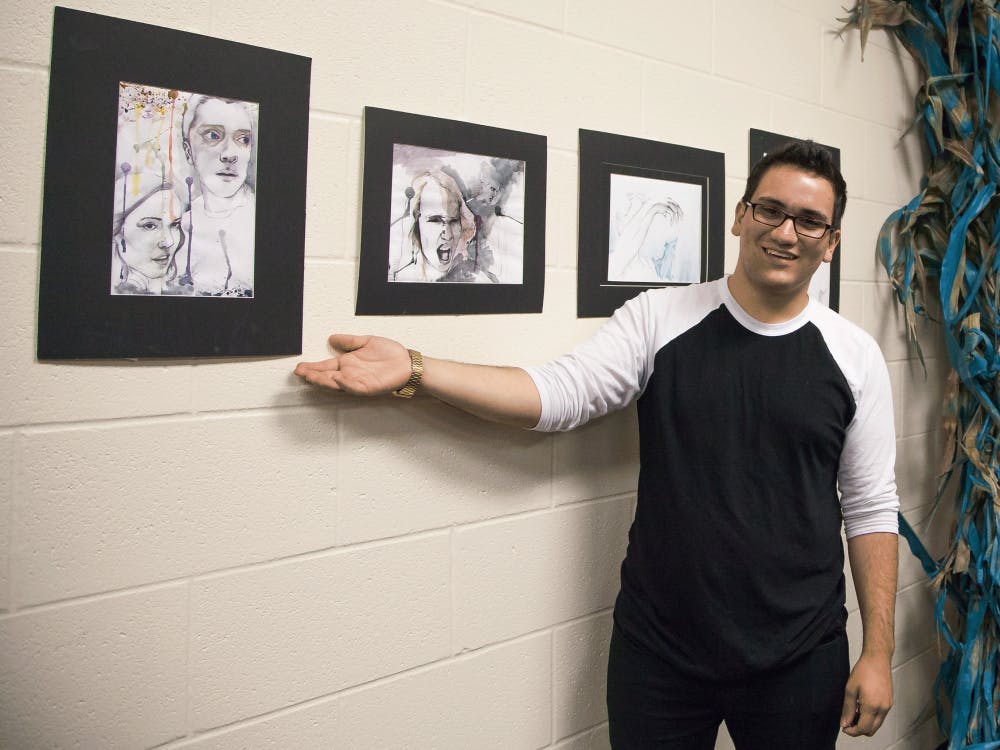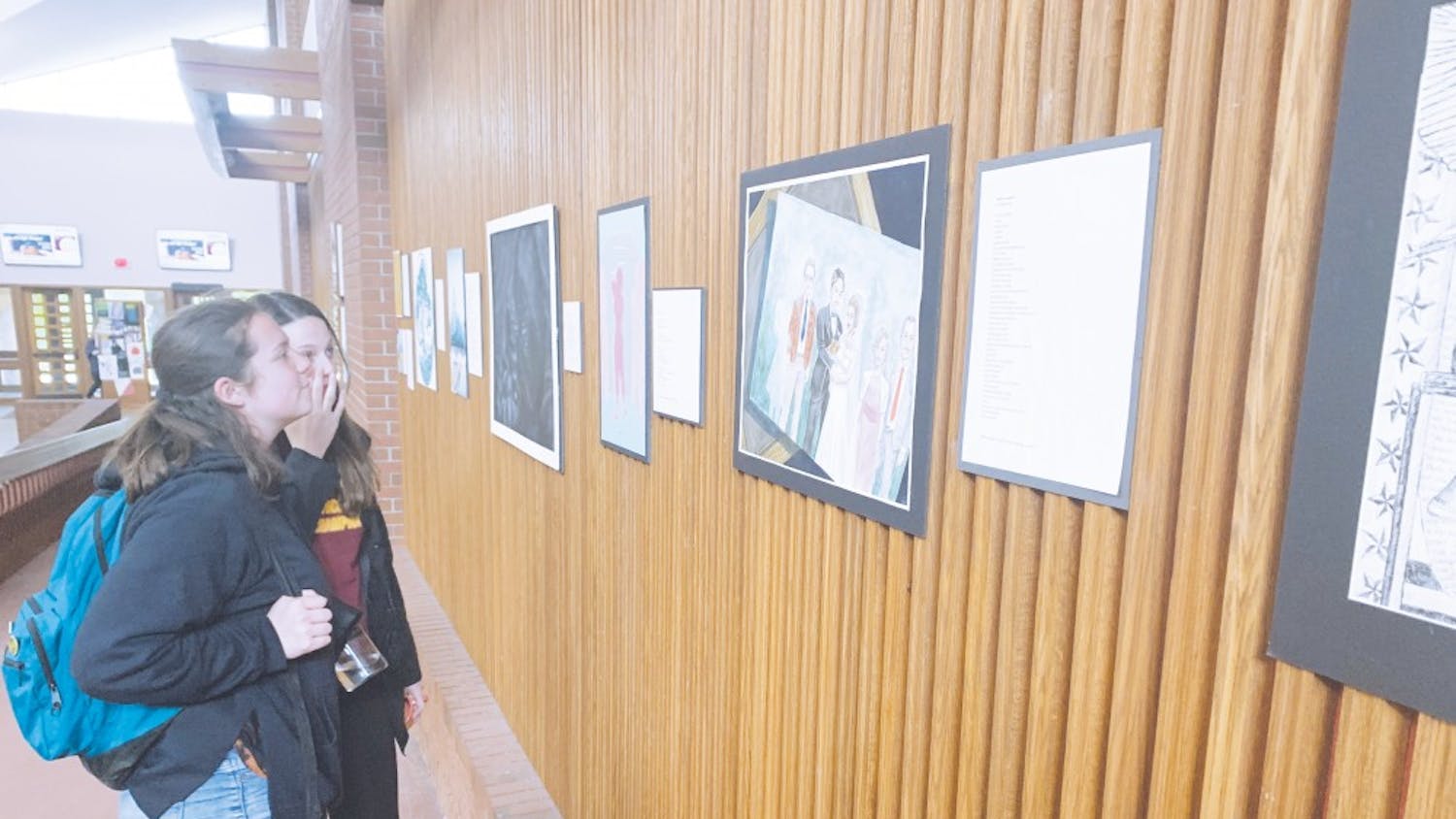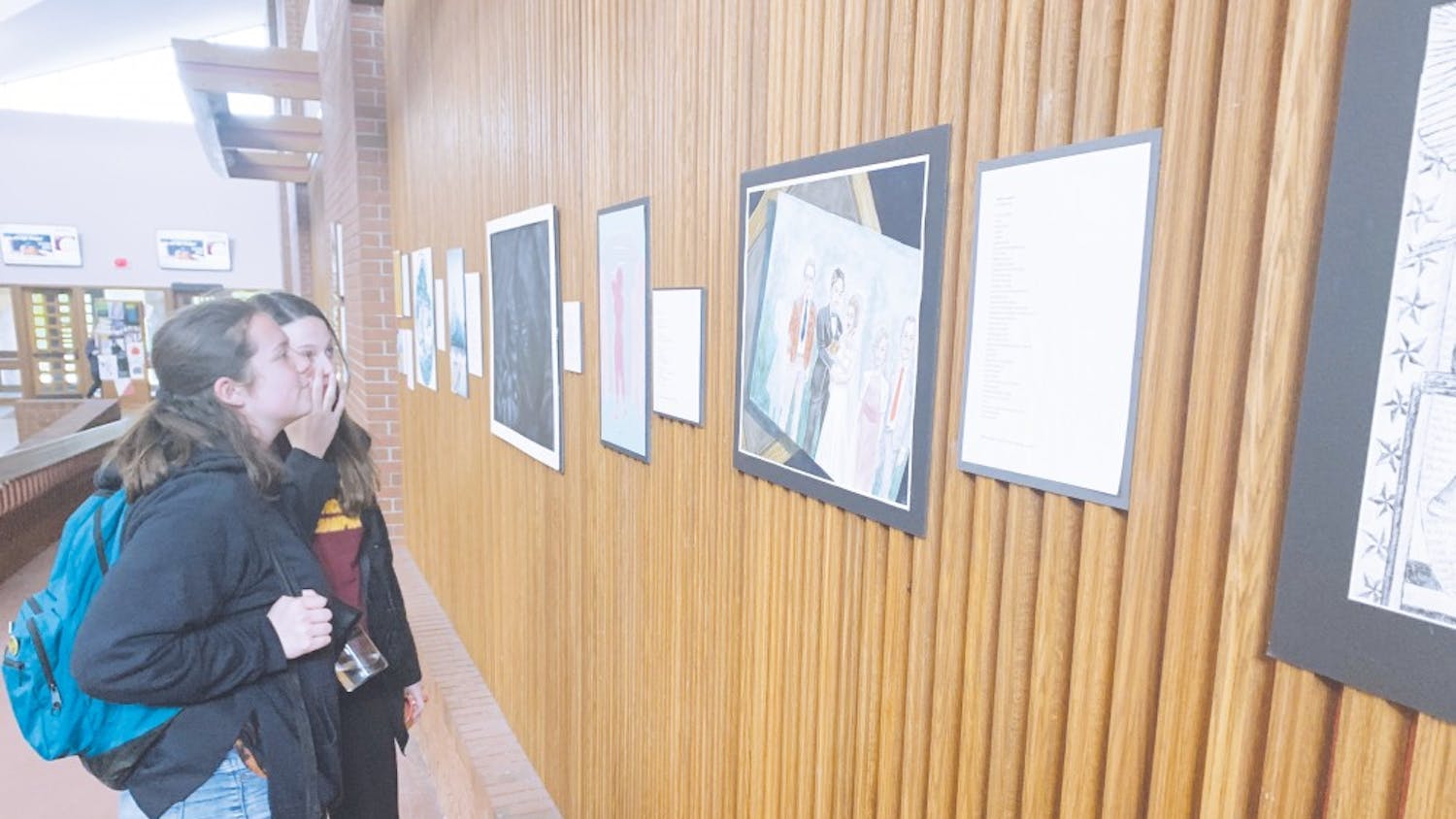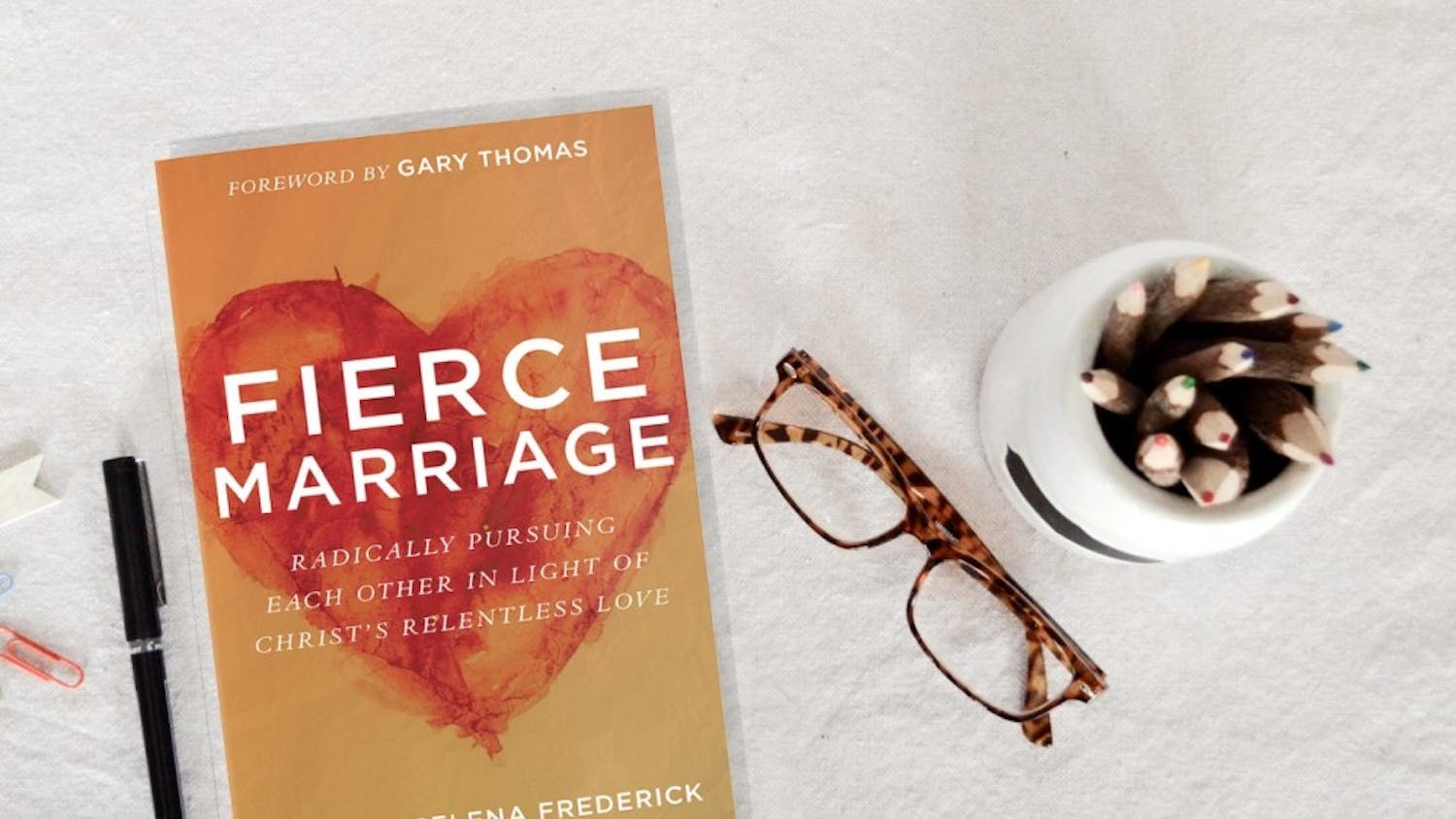By Erin Fuhr | Echo
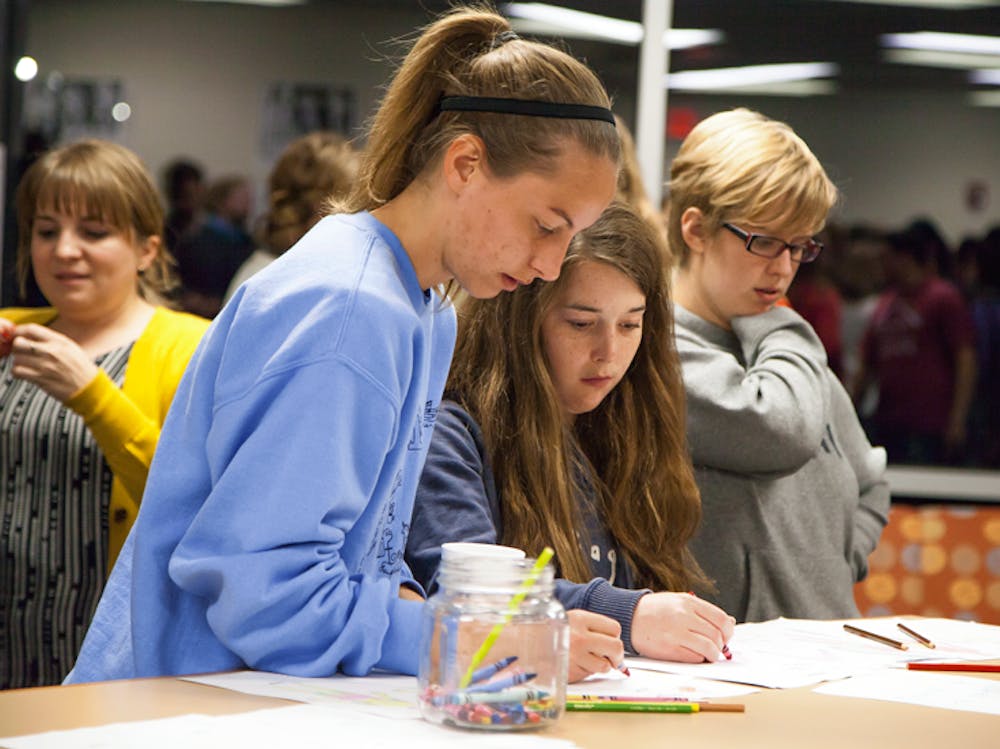
"Holy moly, I was not expecting this kind of turnout."
Heather Stringer, one of the two speakers for Sex and the Cornfields this week, addressed the large crowd of Taylor students that filled the second floor of Breuninger Hall for the art show and panel that took place on Monday night.For the first time, the Residence Life Programming Committee introduced an art component to the Sex and the Cornfields week at Taylor, and it was a huge success. Approximately 400 students came through the Breuninger Hall doors to see the art pieces on display in the second and third floor lobbies and to hear a panel discussion about sexuality and art. The event featured the work of 10 different artists of various mediums. Stringer led the panel, which was comprised of three artists: Rebecca Hartman, Josh Welker and Dan Bowman.
Stringer, as well as being an influential speaker this week, was responsible for adding the art exhibit component to the Sex and the Cornfields week.
"The body had become really important to me and how unengaged it can be, especially within evangelicalism, and so I thought it would be really cool to create some sort of gala event where people went through a sequence of experiencing the body . . . it was incredibly moving," Stringer said.
Stringer had received a $10,000 art grant to work with, so knowing that she was going to be involved with Sex and the Cornfields week, Stringer wanted to incorporate another way to communicate the important messages from the week.
"It seemed like another way of not just using language to try and communicate," Stringer explained. "It's like, if we only use words we're going to miss the more visceral, the more instinctive, the more creative way of engaging the body. And that was kind of the hope, was that we could find another angle or form of communication that isn't just oration."
Stringer was responsible for deciding what artwork would be in the show, but she decided to make the art exhibit a nonexclusive one.
"I decided just to accept it all . . . I think that part of it was that I didn't want to create a who's-in-who's-out mentality, because I think the point was, are you engaging the body? And if you are, I want to hear about it, even if it's still unformed. I think it's good to see everyone's different process of where they're at, whether it's sexually or just bodily. If it was an honest expression, then you're in."
During the panel portion of the event, the artists brought up many thoughts and questions about sexuality and art. Taylor art professor Josh Welker addressed the importance of being open and not suppressing honest stories. "We just need to tell those stories, and be honest; if we're pursuing truth, I don't see how that could be a bad thing, if we're pursuing truth and we're in earnest. These are stories that need to be told."
The artists also tackled issues involving the body in the creative processes. Stringer asked the panel, "In your creative process, how do you engage your body? And not just your body, but just the body in general? If not, why, and if so, can you share a little bit about that process?"
This question resulted in many different viewpoints and got students asking questions to the panel.
Sophomore graphic design major Lauren Bergman voiced her thoughts on the night.
"It wasn't entirely what I expected," she said. "I knew it was an art show, but I wasn't expecting it to be so strictly focused on art, but I thought it was a really good thing, especially dealing with how Christians see art, especially with nudes."
After the extensive preparation and thought that went into putting on this art-focused portion of Sex and the Cornfields, Stringer thought the event successfully reached the students.
"I think people who were a little skeptical, a little scared to engage the body in a more intimate way, found it to be a great platform for conversations for how they dealt with their body, how they've been harmed, how they celebrate their bodies."

